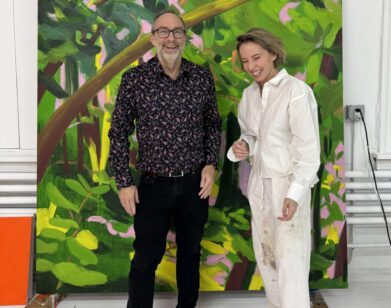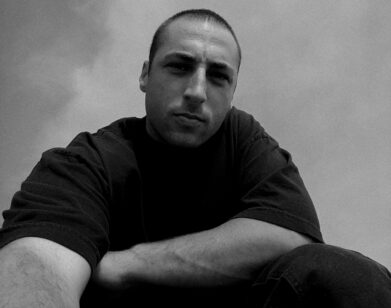Scott Rothkopf

CURATOR SCOTT ROTHKOPF AT THE UPTOWN WHITNEY MUSEUM IN NEW YORK, OCTOBER 2014. ALL CLOTHING: ROTHKOPF’s OWN.
It is not an overstatement to say that the future of art rests in the hands of those who know how to spot it and what to do with it when it arrives. For many in New York, the man who seems to be leading us into the future is 38-year-old Whitney curator Scott Rothkopf. The Texas-raised Harvard grad who was the senior editor at Artforum before joining the Whitney in 2009, has racked up a series of unforgettable exhibitions—each one vital, intelligent, illuminating, and, in every case, managing to take strong work and show it in ways that allow for brand-new considerations. In terms of solo shows alone, Rothkopf first curated Glenn Ligon’s “America” in 2011, followed by the knockout Wade Guyton exhibition in 2012. Then, this past summer, he took on the near impossible: organizing the first-ever comprehensive retrospective of contemporary art’s most prophetic and contentious master, Jeff Koons. Even those who deeply dreaded a Koons carnival were stunned by the spectacular curation. When asked how Koons came to be with Rothkopf at the helm, he says, “It was a kind of kismet. The Whitney was offering him this unprecedented chance to have nearly the entire building—all of the space that Marcel Breuer had designed for art that no other artist has had. I think Jeff reached a point in his life, at 59, where he was really ready for a show like this, and I think that he trusted me as curator, in this time and place, to take it forward.” Rothkopf is modest: he didn’t just take it forward; he took it to the goal line and scored. He says the hardest part about the actual installation of the exhibit, “besides chasing down work and asking people to send extremely fragile and extremely valuable objects like Michael Jackson and Bubbles,” was installing the Play-Doh—”all 27 pieces of it. We had to take the transom off the door, which we’d never done before, just to get it into the museum.”
As planned, Koons was the last show in the Whitney’s iconic Upper East Side Breuer location. Rothkopf and his colleagues are already installed in their new offices in the nearly completed 220,000-square-foot, Renzo Piano-designed compound in the Meatpacking District. “I don’t feel nostalgic at all,” Rothkopf says. “I’m excited because the new space is going to allow us to do everything we’ve been doing but even better. It’s an unprecedented place to show our collection.” The inaugurating show, co-curated by Rothkopf, and opening in late spring, will cover selections from 115 years of the museum’s holdings. But it’s not all looking back. “Everyone keeps asking me, ‘What are you going to do next? How are you going to top the last show?’ I don’t know if I will in that sense. I have other ideas. I’d like to work with younger artists again, and I’d also like to do a group show looking back at the ’60s.” In terms of those young artists, Rothkopf sees the influence of the artists he championed earlier in their careers—Guyton, Kelley Walker, and Paul Chan, to name a few—beginning to impact an emerging generation of artists. “I feel like there’s an energy percolating and coming back into things,” he says. “I think it’s really going to push art in new directions.”






